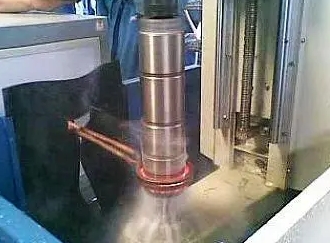- 24
- Oct
How to perform high-frequency quenching of precision piston rods
How to perform high-frequency quenching of precision piston rods
High-frequency quenching of precision piston rods is a heat treatment method in which induced current is generated on the surface of the piston rod, then heated, and then quenched. Its main purpose is to get the martensite structure on the surface of the piston rod within the allowable range, and the core of the piston rod still maintains the state of the structure before quenching, so that the surface hardness of the piston rod can reach the standard, and the plasticity and toughness of the core can be achieved. Up to standard.
The specific operation of high-frequency quenching of precision piston rod: After rough grinding, it is subjected to medium-frequency or high-frequency quenching treatment, and its induction heating is 1000-1020 degrees, and compressed air is used for jet cooling to make the hard layer depth of quenching. It is 1.5-2.5mm. After quenching, it must be straightened. After that, it is tempered at 200 to 220 degrees and kept for 1 to 2 hours, so that the hardness after cooling can reach HRC50.

